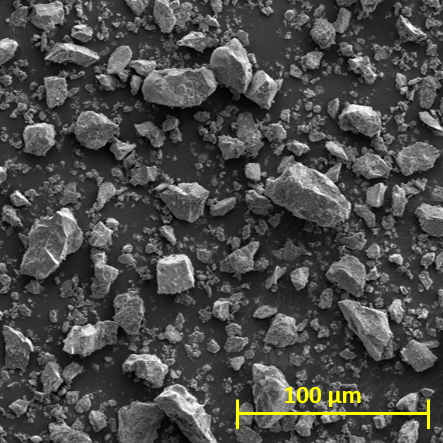Research Summary Report of A02
Particle-Bed 3D Printing by Selective Cement Paste Intrusion (SPI) – Particle Surface Functionalisation, Particle Synthesis and Integration of WAAM Reinforcement
[06.10.2023]
Hamilton, Leigh Duncan; Researcher;
Leigh-Duncan.Hamilton@tu-braunschweig.de
Zetzener, Harald; Leading researcher
H.Zetzener@tu-braunschweig.de
Kwade, Arno; Project leader
A.Kwade@tu-braunschweig.de
All: TU Braunschweig, Institute for Particle Technology
Our main goal within project A02 is to unite two additive manufacturing (AM) processes, thereby, creating a hybrid AM process for structural concrete. The foundation of A02 is formed around the concrete 3D printing process Selective Paste Intrusion (SPI). SPI creates components in layers by first spreading coarse aggregates (usually quartz) on a surface or previous layer. Subsequently, the cement slurry is applied onto designated areas, where it fills void volumes between aggregate particles.
The second AM process is Wire and Arc Additive Manufacturing (WAAM). WAAM essentially implements steel as a means of reinforcement to create structural concrete components [1].
Summary
While our project partners from TU Munich are investigating the mentioned printing technologies as well as active cooling strategies to reduce heat transfer into the particle bed, we at the Institute for Particle Technology are, inter alia, responsible for adjusting aggregate as well as cement particle size distributions.
It is safe to say that particles within a collective never come in an equal size (see Fig. 1), which is why a collective is described by statistical distributions and relevant characteristic values, e.g., median value. Particle sizes are thereby commonly characterised by particle size distributions (PSD). Furthermore, different methods of manipulating PSDs exist, e.g., grinding, sieving or classifying.
With respect to cement particles, the PSD can have a major effect on SPI, and therefore, the shape accuracy as well as strength of finished concrete components. For instance, finer particle sizes of a cementitious material increase the specific surface area. As a result, more contact surfaces for the surrounding liquid (primarily water) are available, leading to a highly viscous slurry and faster hydration.
A reduction of the cement particle size is usually performed in dry grinding processes, e.g., ball mills. Comminution or grinding of a product in media mills generally occurs due to grinding media (balls) collisions. Product particles are thereby captured and stressed upon contact. Depending on the applied machine, grinding may not only adjust the PSD, but also transform the particle shape. However, altering the cement slurry particles in such a manner, whether size or shape, changes its intrusion behaviour into the aggregate particle bed as well as the process of concrete hardening (time, shrinkage, etc.). For that reason, the influence of cement particle properties (focal point particle size) on the slurry or rather suspension rheology and, thus, intrusion behaviour is the core subject of today’s newsletter.
Current state of research
Within the present topic, three different, dry-operated media mills were used to grind cement that is currently used in SPI. The applied media mills were a stirred media mill, a ball mill and a planetary ball mill. Steel balls (3-4 mm) were implemented as grinding media. Fig. 2 demonstrates SEM-images of cement particles resulting from the respective grinding processes. According to Fig. 2, the different grinding processes do not only generate different particle sizes, but also distinctions in the particle form or shape. The reference cement material (a) has ridged edges that become rounder once ground in a stirred media mill (b) or planetary ball mill (c). However, cement particles ground in the ball mill (b) still possess ridged edges. This may be a result of deviating mechanisms derived from the movement of the balls in the individual processes. A heightened number of very fine particles is also noticeable on the surfaces and around the particles of (c) and (d).
These experiments were subsequently used to evaluate the influence of the particle size and morphology on the viscosity of the cement slurry. Additional slurry instrusion tests connected the dots between particle properties, viscosity and applicability for SPI. As a result, initial material threshold parameters were determined for SPI.











